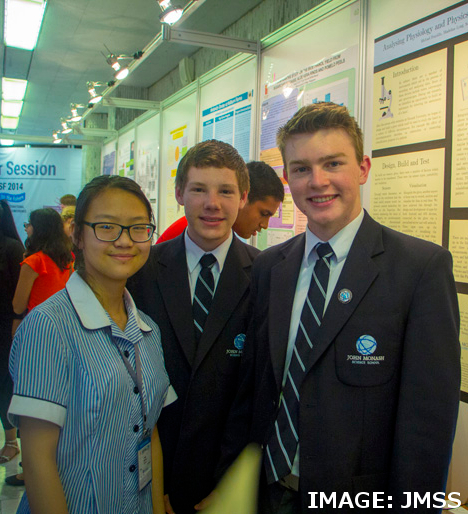Seeds of science future watered in Moscow
 Some young Australian students’ ingenious sensor glove have been weighed against inventions from around the world.
Some young Australian students’ ingenious sensor glove have been weighed against inventions from around the world.
A sensor glove connected to a smartphone app and an investigation into the effect of urbanisation on waterways were Australia’s contributions to the 10th International Student Science Fair (ISSF) in Moscow; an opportunity for local minds to show the latest in innovative thinking.
The Monash Facility for Instrumentation and Technology Development supported students from John Monash Science School (JMSS) to design, prototype and test a sensor glove that is wearable and portable.
The glove uses a microprocessor to collect data and a radio transmitter to send it. It is intended for a variety of uses such as physical rehabilitation, and highlights the development of wearable technology in solving complex problems.
The glove is based on a project that researcher Antonio Benci from the Monash Faculty of Science is developing for the School of Psychological Sciences.
Students took the initial idea and developed it further, incorporating not only finger tip pressure sensing but adding finger flex sensing, hand temperature measurement and 3D axial movement measurement, taking a simple research project and extending its capability and scope,” Mr Benci says.
JMSS students showcased their projects at the five-day Science Fair in Moscow, with ISSF 2014 including a mixture of scientific presentations and cultural experiences, including lectures by eminent Russian professors on knot and braid theory, environment and sustainability, and a physics lab on waves.
“It was truly intriguing and inspiring. The projects ranged from simple yet highly beneficial and sustainable inventory ideas to cutting-edge research such as genetic manipulation and synthesis of new organic molecules,” said Year 12 JMSS student Aiswarya Elangovan.
John Monash Science School will host the next ISSF in Melbourne in December 2015.







 Print
Print